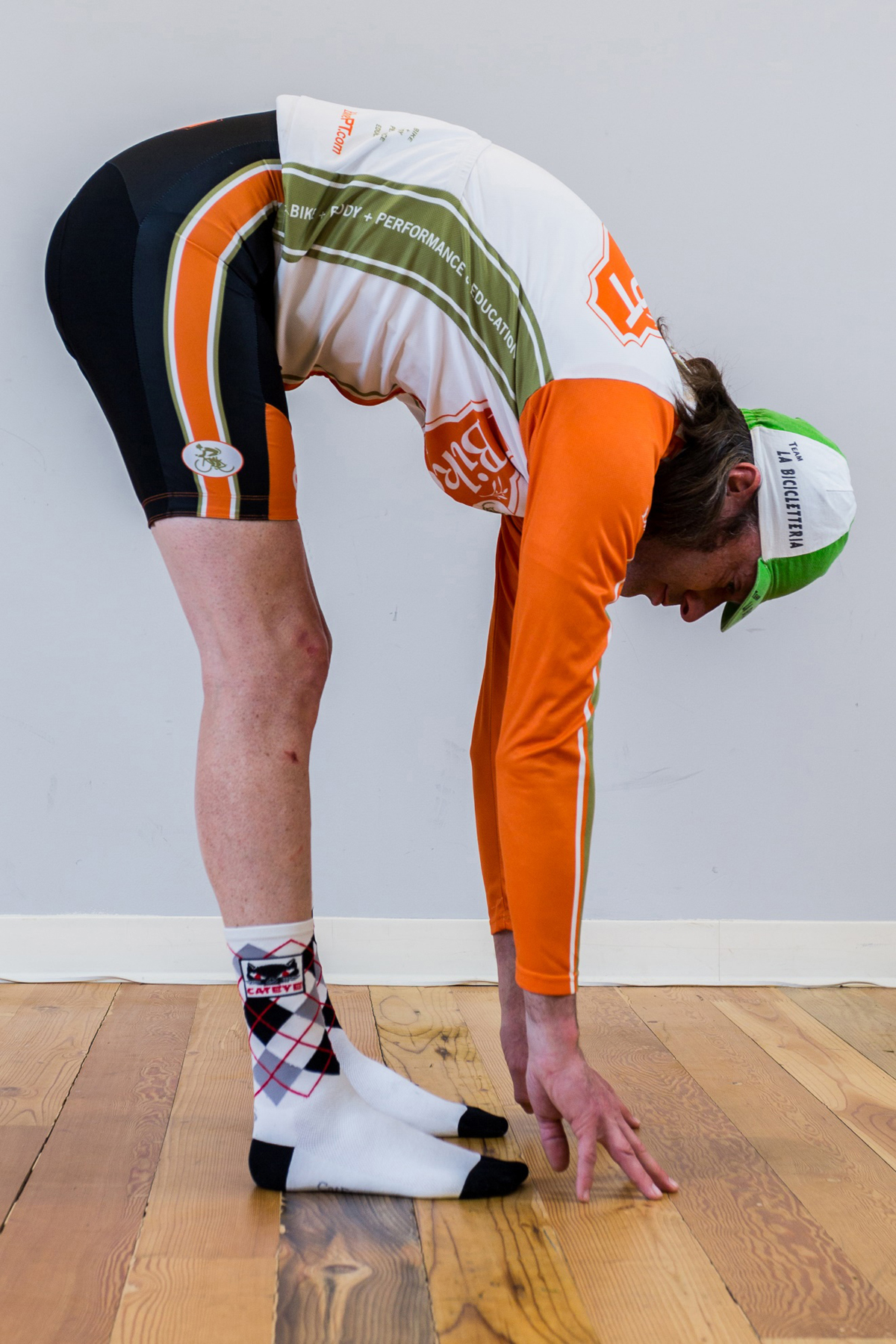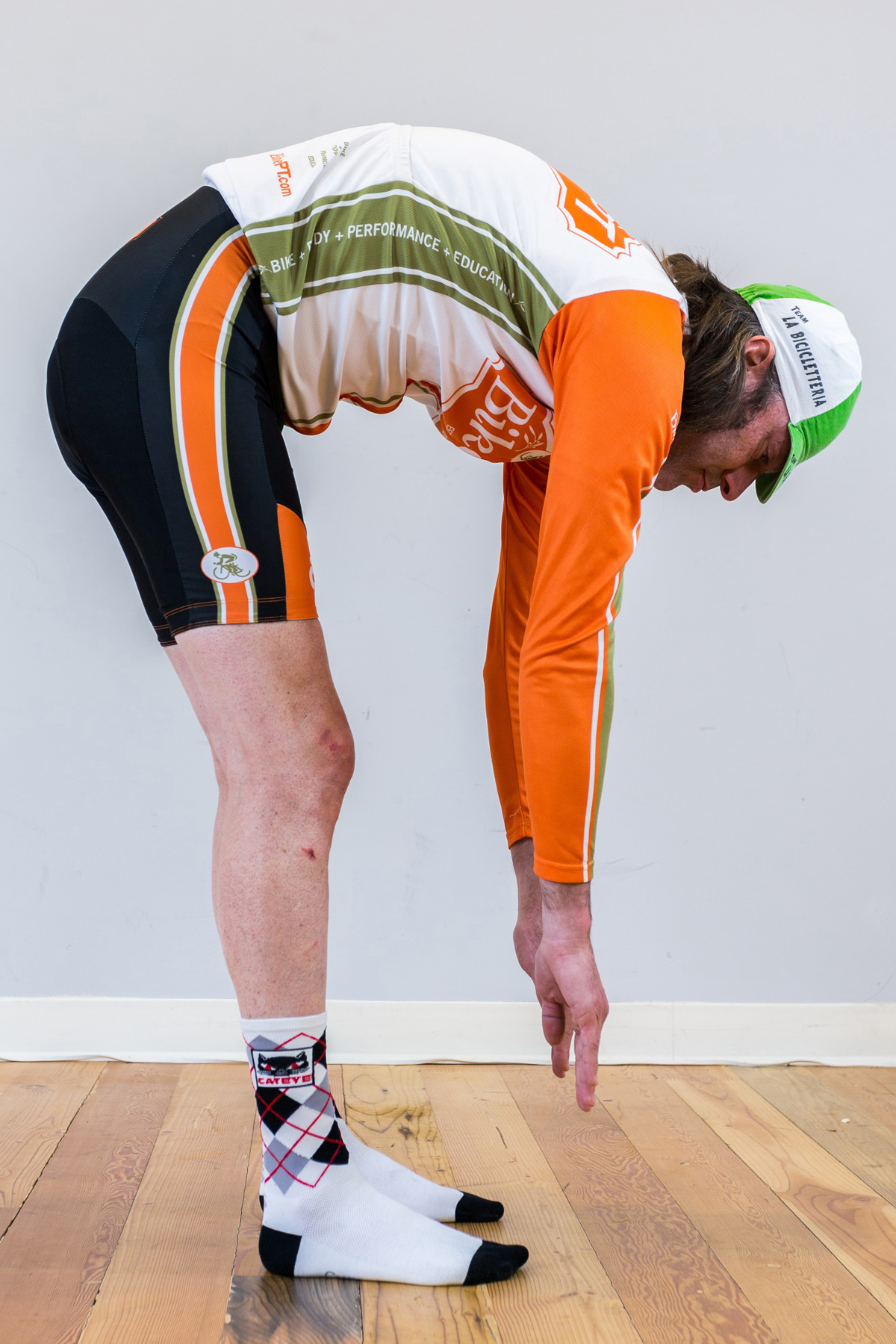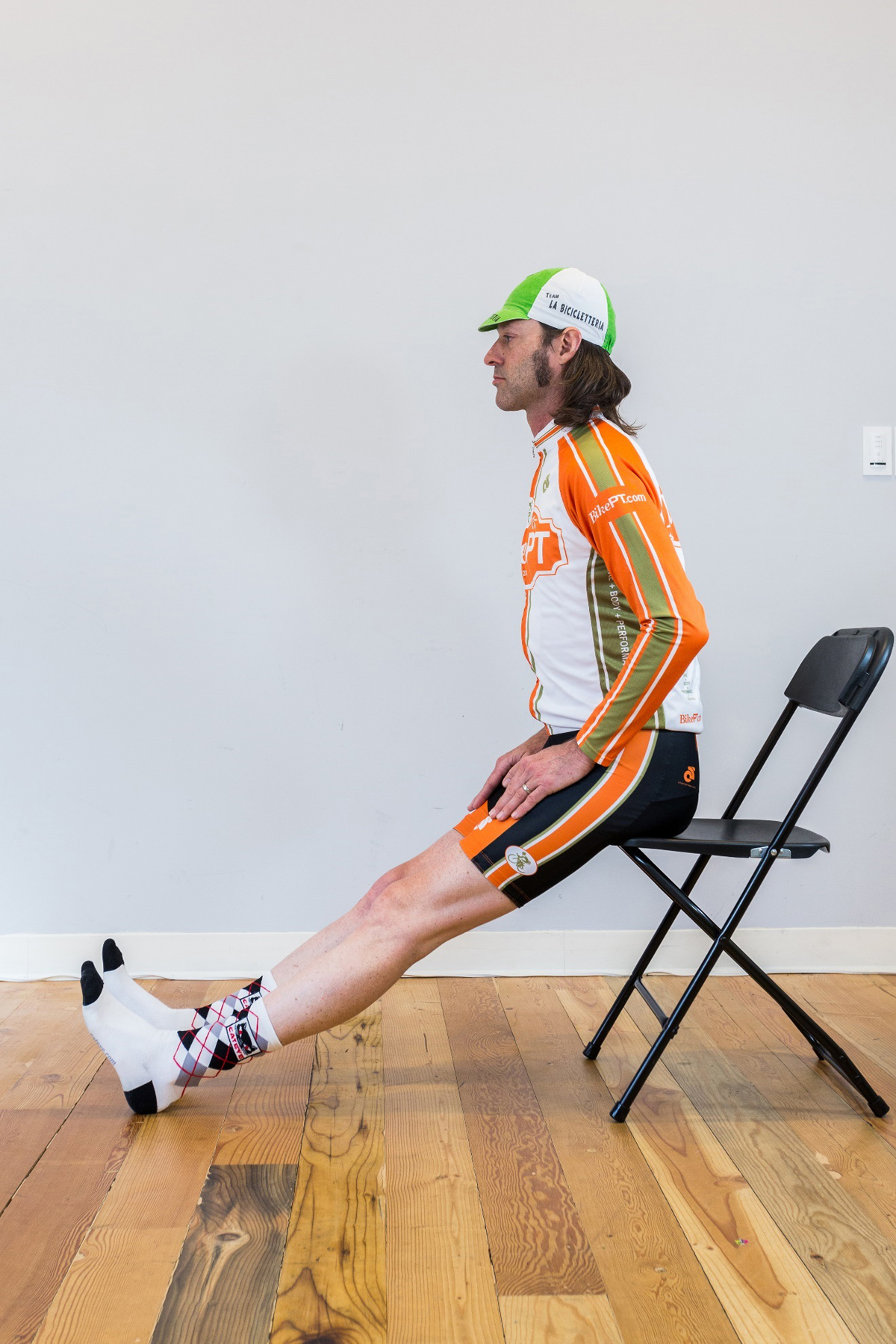By Erik Moen PT — The human body was designed to walk and run, not ride a bicycle. Adaptation of the human body is required for best tolerance of bicycling. Forward reach to the handlebars requires flexibility through the back of the legs. Limits in flexibility of hamstrings and gluteals will limit a person’s ability to assume certain bicycle positions. Increases in flexibility should lead to improvements in postural tolerance of the bicycling positions. This is especially true if you are hoping to utilize an aerodynamic bicycling position. Good postural/positional tolerance of bicycling includes the ability to “hinge” forward through the axis of the hips. This is largely a function of hamstring flexibility and hip mobility. Poor flexibility of the hamstrings in relationship to a chosen bicycle position can lead to injury and limits in mechanical efficiencies.
A method to assess your hamstring flexibility is simply trying to touch your toes. This is performed with your legs straight, feet hip width apart and feet straight forward.

Good hamstring flexibility will allow you to touch your toes with your fingers (Figure 1). You will notice good rotation through the hip and minimized “reach” through the mid-back (thoracic spine). Aggressive aerodynamic positions should have this flexibility goal as a minimum requirement.

Bicyclists with limited hamstring flexibility cannot touch their toes (Figure 2). You will notice excessive arching through the mid-back (thoracic spine) to compensate for limited hamstring flexibility. Spinal compensation for a lack of hamstring mobility is likely a habituated motion compensation. Significantly limited hamstring flexibility will require a more upright torso position on the bicycle. Bicycle positions that push the limits of hamstring flexibility will increase a bicyclist’s risk of overuse injury and limit efficiency.

A simple hamstring stretch is easily performed from sitting at the edge of a chair. Sit forward to the front of the chair. Place your feet/legs straight forward, “pedal-width” apart. Feet should be upright, not rotated outwards. It is crucial that you keep your torso “straight”. Slowly rotate forward from the axis of the hips until a moderate stretch is experienced on the back of your legs. Hold this stretch for a total of two (2) minutes (Figure 3).
Research demonstrates that stretching for length/flexibility should be performed for a prolonged duration. Two minutes seems to be the minimum time period that demonstrates some length gain. Stretching for length should be performed daily. This is an easy stretch that can be performed almost anywhere. No excuses. Stretching for length should not be performed immediately prior to vigorous exercise. This may increase your risk of injury. Improvements with flexibility are more likely to be realized when you stretch daily. Please be aware that gains in flexibility take time. Use care with your flexibility gains expectations. Adaptation of the human body takes time. “More” is not necessarily better. Excesses in frequency and deep stretching load will significantly increase your chance of injury. If you can easily “palm” the ground, you may not benefit from getting more flexible. If you can easily touch palms to the ground, you should probably only consider stretching as a means of motion/muscle recovery and to maintain a reasonable level of flexibility.
Gains in hamstring flexibility will improve your ability to achieve advanced bicycle positions/postures. Flexibility takes quality and regularity of stimulus over a prolonged period. A good goal for hamstring flexibility is the ability for you to touch your toes from straight leg standing.
Consult a local qualified professional if you have special considerations, need assistance assessing your flexibility, or helping you achieve your bicycle specific musculoskeletal goals.

